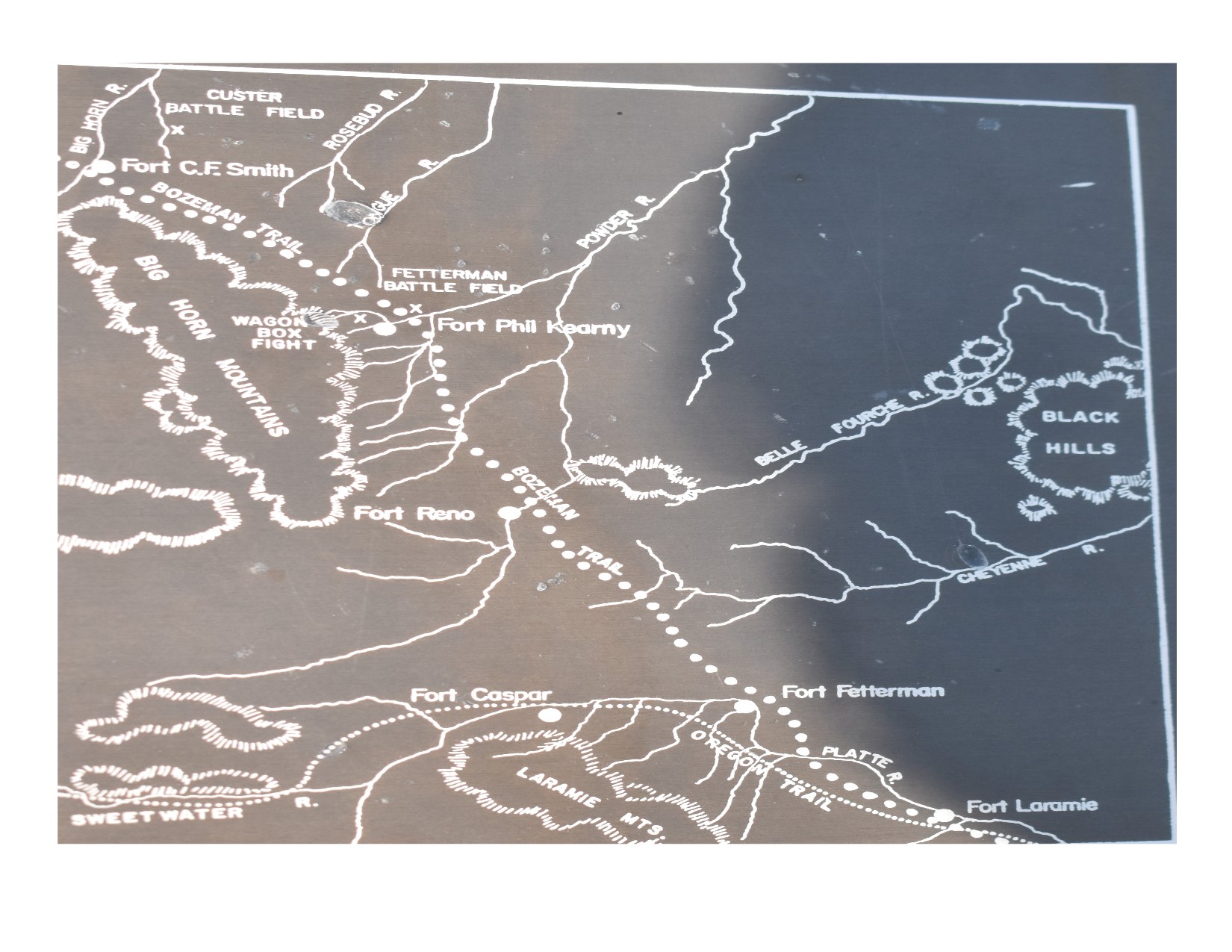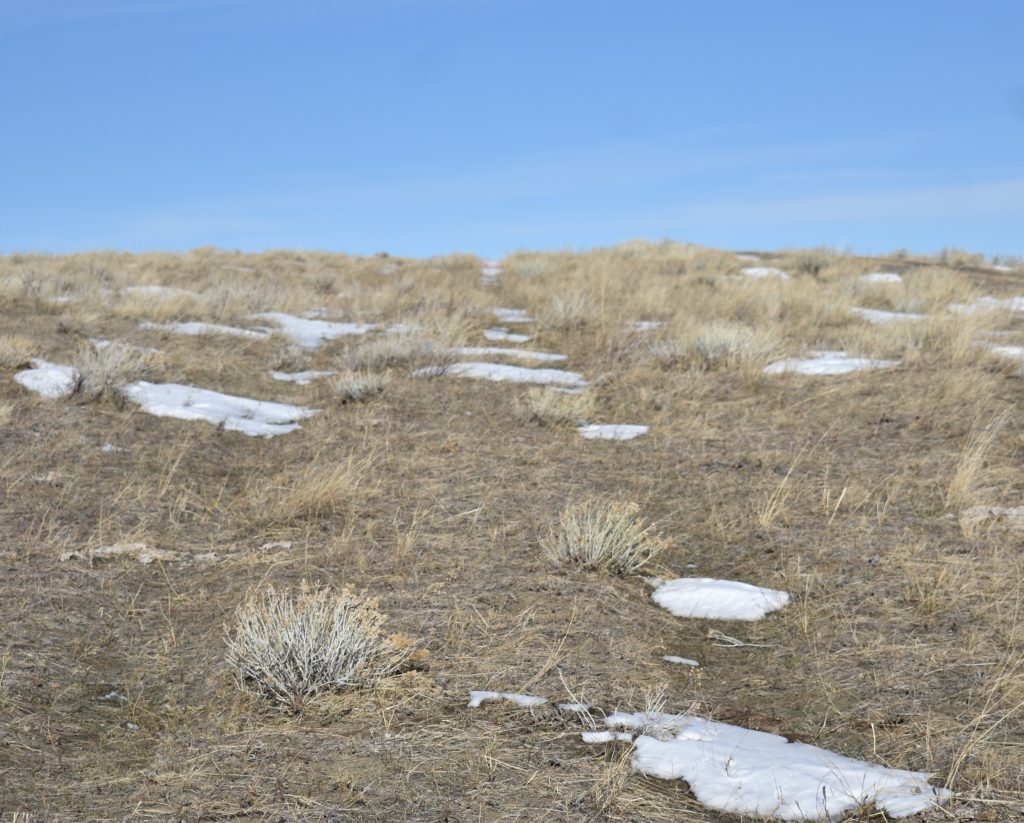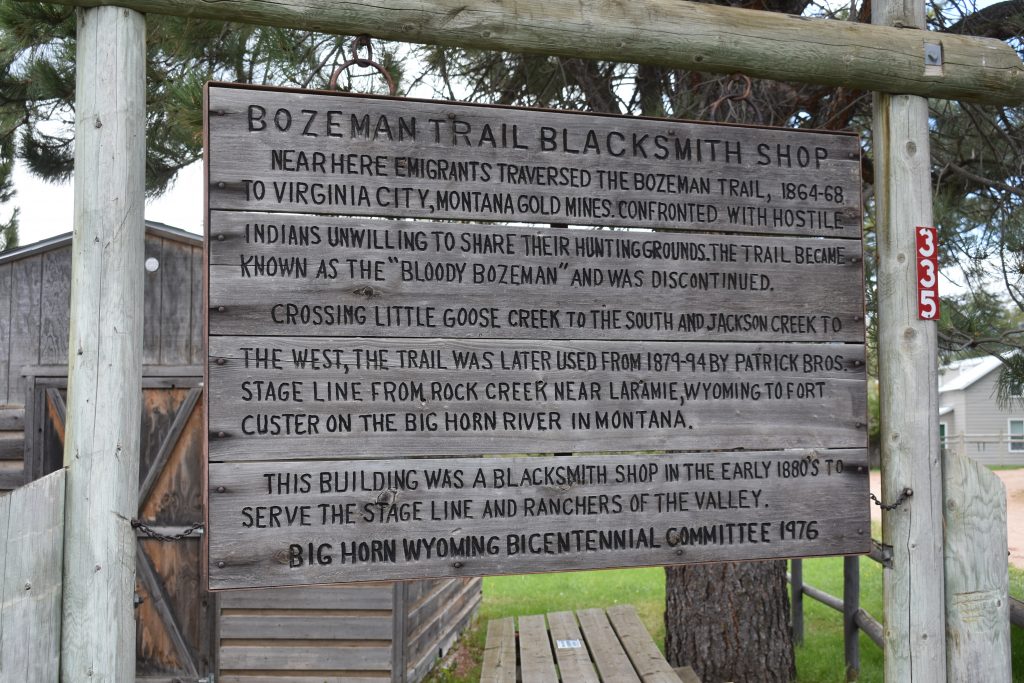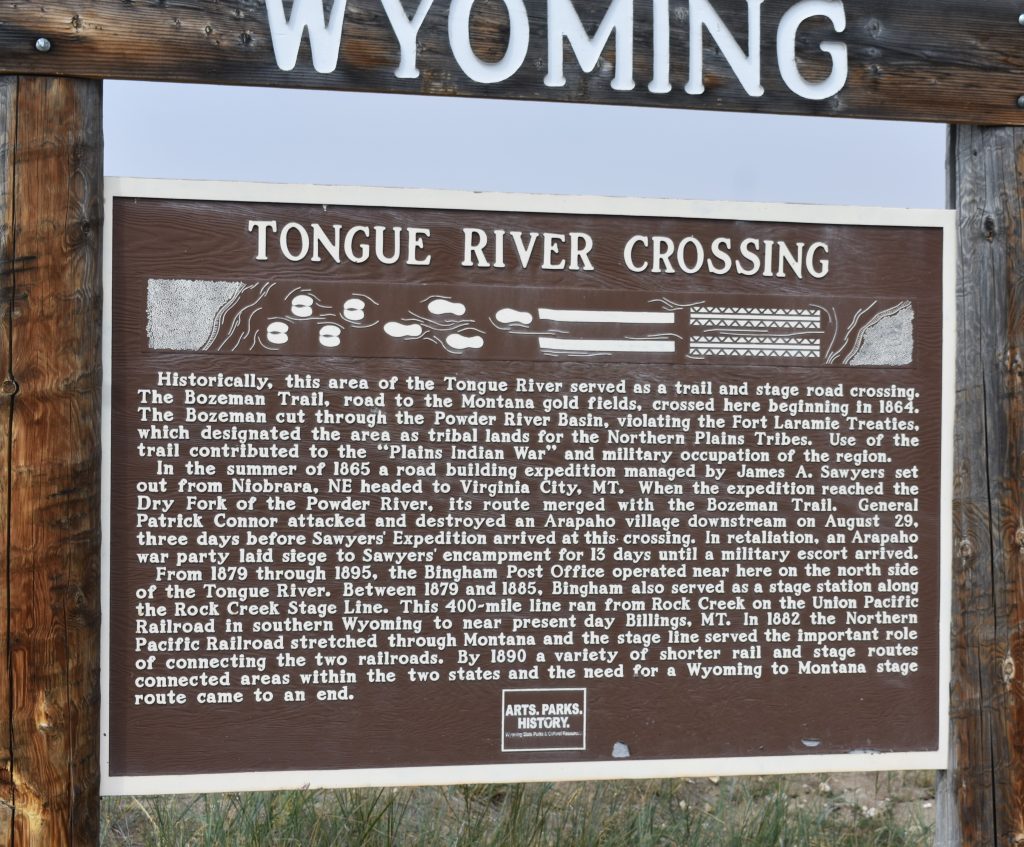alt
The Bloody Bozeman, Highway to the Gold Fields

In 1863, gold was discovered in Alder Gulch near Virginia City, Montana, and was heralded as one of the “Richest Gold Strikes in the Rocky Mountain West.” The Rush was on. Mountain man Jim Bridger, who was well acquainted with the area and the Native American tribes, blazed a trail on the west side of the Bighorn Mountains, thus avoiding the Sioux’s best hunting grounds.
John Bozeman with John Jacobs scouted a more direct route to the gold fields. The Bozeman Trail ran from Fort Laramie along the east slope of the Bighorn mountains near Sheridan, Wyoming. It was mainly used by gold seekers from 1863–68.
On August 12, 2021, in a program hosted by the Fort Phil Kearny/Bozeman Trail Association, Donovin Sprague, a member of the Minnicoujou Lakota, gave a talk about his family and the impact of the Bozeman Trail on the Native American tribes in the Powder River Country. He said their history is recorded on the ‘Winter Count’ buckskins and passed down by oral traditions.
Sprague’s family were involved in many battles against the US Army. By 1857, the tribes saw a lot of destruction to the lands and the buffalo herds by the white men and gold seekers. That year there was a large gathering of tribes at the base of Bear Butte to discuss the encroachment of the white men into their country.
“The Bozeman Trail wasn’t built by the gold seekers,” Sprague said. “It was improved by them, but it was actually an old Native American trail….The US Government established three forts, Reno, Fort Phil Kearny and C.F. Smith. They put those forts in the middle of a hornet’s nest.”

According to Article 2 of the Fort Laramie Treaty of 1851, the United States had right to “establish roads, military and other posts”. All parties that were at the fort signed the treaty. The Crow Indians felt the treaty gave them the right to the hunting lands along the Powder River, as for two centuries the Cheyenne and many bands of Lakota had been migrating westward and were pressing hard on the Crow tribe. The Crow allied with the white men to get their land back. The Sioux felt the land was theirs.
In a Sheridan Post article, on November 1, 1912, it tells about surveying and building the Bozeman Trail. According to the article, Carrington was not enthused about where the trail was to be located. With the death of General H. B. Carrington, which occurred at his home in Hyde Park, Mass., Saturday, there passed away a man who will always remain a notable figure in the early history of Wyoming. It was by his command that the first full garrison flag that ever floated between the Platte and the Montana line was first given, to the breeze one beautiful October day just 46 years prior to his death. It was General Carrington with the Eighteenth infantry, now stationed at Fort Mackenzie, who in the bloodiest days in the history of the land that is now Wyoming, stood as a bulwark between the bloodthirsty savage and civilization. He brought the first semblance of safety to the emigrant over the old Bozeman trail, and had his advice been followed years of constant warfare with the Indians would have been avoided, Wyoming’s development would have been advanced many years, and many lives would have been spared that were needlessly sacrificed. Forty-six years ago last May, General Carrington, with a portion of the Eighteenth infantry, left Fort Kearney, Neb. for the purpose of establishing three forts to protect emigrants on the old Bozeman trail. The command moved up the Platte to Fort Laramie, where a peace conference was in session, and it was there that disregard for General Carrington’s counsel caused the first bloodshed.

Carrington was ordered to proceed with the command to establish the forts, but he urged that he be permitted to wait until the conference was ended. Permission to halt was denied, and the Indians, construing this move as evidence of the government’s intention to take possession of the country without regard to the result of the conference, suddenly withdrew and immediately went upon the war path. Later, against Carrington’s advice, forts were abandoned and the country left to the mercies of the Indians, but that was not until after months of stubborn fighting and after hundreds of men had been killed. Fort Phil Kearney, which stood near the confluence of the Pineys, was established by General Carrington, drawing his own plans and constructing the most perfect fort of the kind, with one exception, in America. On the first evening after the troops arrived at the site of Fort Phil Kearney, they were attacked by the Indians and during all the months that General Carrington was in command there was not a day upon which there was not a fight or upon which the fort was not menaced by redskins…..While in Sheridan in 1908, General Carrington wrote a short description of the march to Fort Phil Kearney for publication in The Post, in which he told of the manner in which the Sabbath day was observed by bits command. The expedition which left Fort Kearney, Neb., May 14, 1866, wrote General Carrington, “marching onward over alkali wastes, through countless buffalo herds, with dried sage and buffalo chips for fuel, and with the carcasses of cattle called Mormon Milestones, from the cattle they lost in the western migration”

Many homesteaders and frontiersmen used dried buffalo chips for fuel, in a land where wood was often scarce. It was reported by those who traveled the Bozeman Trail that it was marked by the skeletons of horses and cattle that died during the journey.
The article continues about the march: (We) only marched in the morning hours, for protection from the sun, and resting at times with but one day’s exception of resting on the Sabbath; migrating emigrant trains that passed us and traveled every day were repeatedly passed by the military column, and in more than one instance the troops reached Fort Reno on Powder River one full week in advance of trains they had passed who had taken no rest. “When the first tent was erected and afterwards, as each new barrack became ready for use, a Sunday religious service was observed, and at guard mounting, each Sabbath day, soft music and Old Hundred distinguished the day from all similar days except when, like the founders of New England, the bugle call summoned each man to the common defense.”
In the Sheridan Daily Enterprise December 11, 1909, there was this article when it reported the death of the old Sioux leader, Red Cloud. In 1866 Red Cloud represented practically all of the divisions of the Siouxs (sic) at the treaty meeting at Fort Laramie, Wyo. The question at issue was the building of the Union Pacific through Sioux territory. It was agreed that the railroad should follow the Platte valley, but the Indians objected to the opening of the Bozeman trail, which entered their ideal hunting grounds. While the meeting was in session federal troops occupied the trail. Red Cloud left the treaty meeting with the declaration “You may take my country, but I will mark every mile of road with the bodies of your soldiers.”

The principal Bozeman Trail conflicts took place in the Powder River Country, from Fort Laramie north to Fort C. Smith. From what is now Bozeman, Montana and on into Virginia City, the emigrants could breath a little easier. During the years the Bozeman Trail was open, around 3,500 emigrants traveled it in search of easy wealth. Of these, around 50 were killed by the Native Americans, earning the name, “Bloody Bozeman.”
In 1868, another treaty at Fort Laramie recognized the Powder River Country as the hunting territory of the Lakota, Cheyenne and their allies. For a time the government used the treaty to shut down European travel along the Bozeman Trail, and President Grant ordered the three forts along the trail be abandoned. Later, all three forts were burned by the Indians.

However, closing the trail was not popular among the entrepreneurs. In a Cheyenne, Wyoming Tribune article on November 12, 1870. The Road to Montana. The Bozeman Emigrant road between Bozeman and Cheyenne, is said to be the best natural road in the mountains. We clip the above from the “Pick and Plow,” a very lively paper published at Bozeman. There is no question about the road from this place to Montana along the base of the mountains being a fine one. It is not a mountain road, but is to all intents and purposes, a plain road. The writer has been over this road from this place to Fort Reno on the Powder River, and is of the opinion that a railroad can be located from here to the Powder River, without encountering any great natural obstacles then are found between this place and Denver, on the D.P. (Denver Pacific) Road; which is nearly all laid on the natural grade. The country between Powder River and Helena, Montana, we are informed by numerous persons who have been over it, does not differ in any important respect from that between here and Powder River ….The importance to Wyoming and Montana of opening this road, first for wagon, and then laying out and constructing a railroad, can’t be overstated The new discoveries of Placer gold diggings in Southeaster Montana are sure to attract a large emigration to both regions this coming spring..Cheyenne is the natural point on the Union Pacific road for this emigration starting from this place to go to Montana is existing Indian treaties.
Although the Sioux won back the hunting grounds for a while, they were forced to surrender after the battle of the Little Big Horn in 1876 and move to reservations.
Today, Interstate 90 from Sheridan to Bozeman, and Interstate 25 from Buffalo to Douglas, cover roughly the same route as the old Bozeman Trail.
Fort Laramie, Fort Phil Kearny, and Fort Fetterman have been preserved and there are stone monuments along the old trail. In some places the ruts can still be seen, a mute reminder of the many travelers who came West searching for the glittering metal that could make one a fortune.


cheryl Willyerd
January 9, 2022 at 12:25 pm
Our History is very important. Thank you for this article. I loved Montana till the same thing is happening. Only from the rich.
Brett D. Hoes
January 9, 2022 at 4:49 pm
By all right the land still belong to the Native American people from the very first treaty that was made by the United States Government Representative of the time.But as time tell us that
The White man has proven it and its a fact that throughout history that they lie and are never be trusted
on any treaty that they will
break!
Yes I will always and forever be a true Native American Soul and Shaman / Medicineman Spirit!!!
Ira roadifer
January 9, 2022 at 10:20 pm
Enjoyed the article. The Yellow rock as the Indians called it was the evil and cause of many problems and broken promise with the native Americans.
I was hoping to see the mention of the Bridger Trail that was built by Jim Brigder as a safer route to the gold field.
Still a very good story of the Bloody Bozeman.
Jerry Enzler
January 10, 2022 at 8:46 am
I enjoyed the article about the Bozeman Trail and was extremely pleased to read the comments by Donovin Sprague. Jim Bridger tried to avert war by leading theminers on the Bridger Trail instead of the Bozeman Trail. Like Donovin Sprague, I also spoke at Fort Phil Kearney (on July 12) about my new book, Jim Bridger: Trailblazer the American West which was published by Oklahoma Press in 2021.